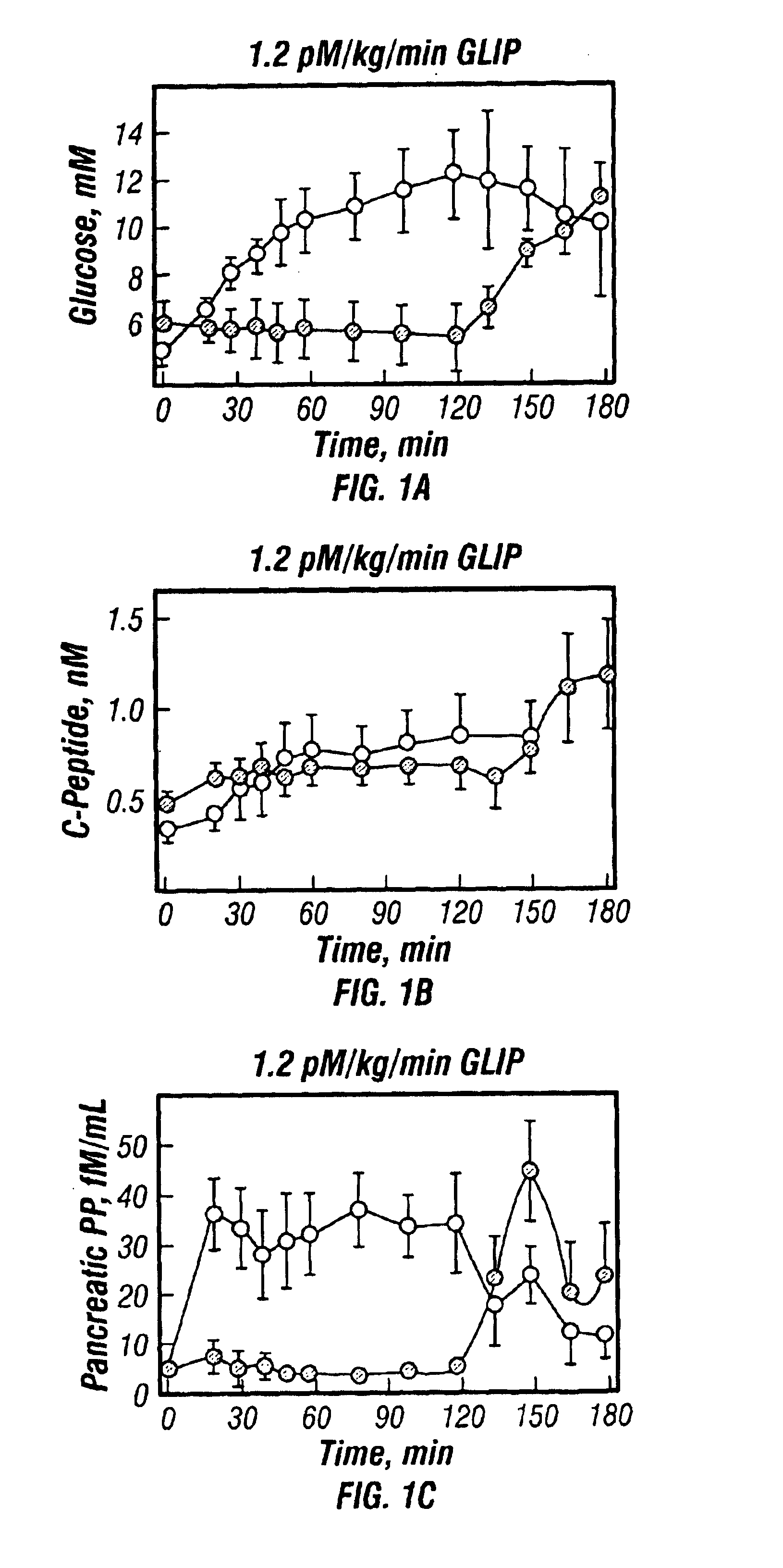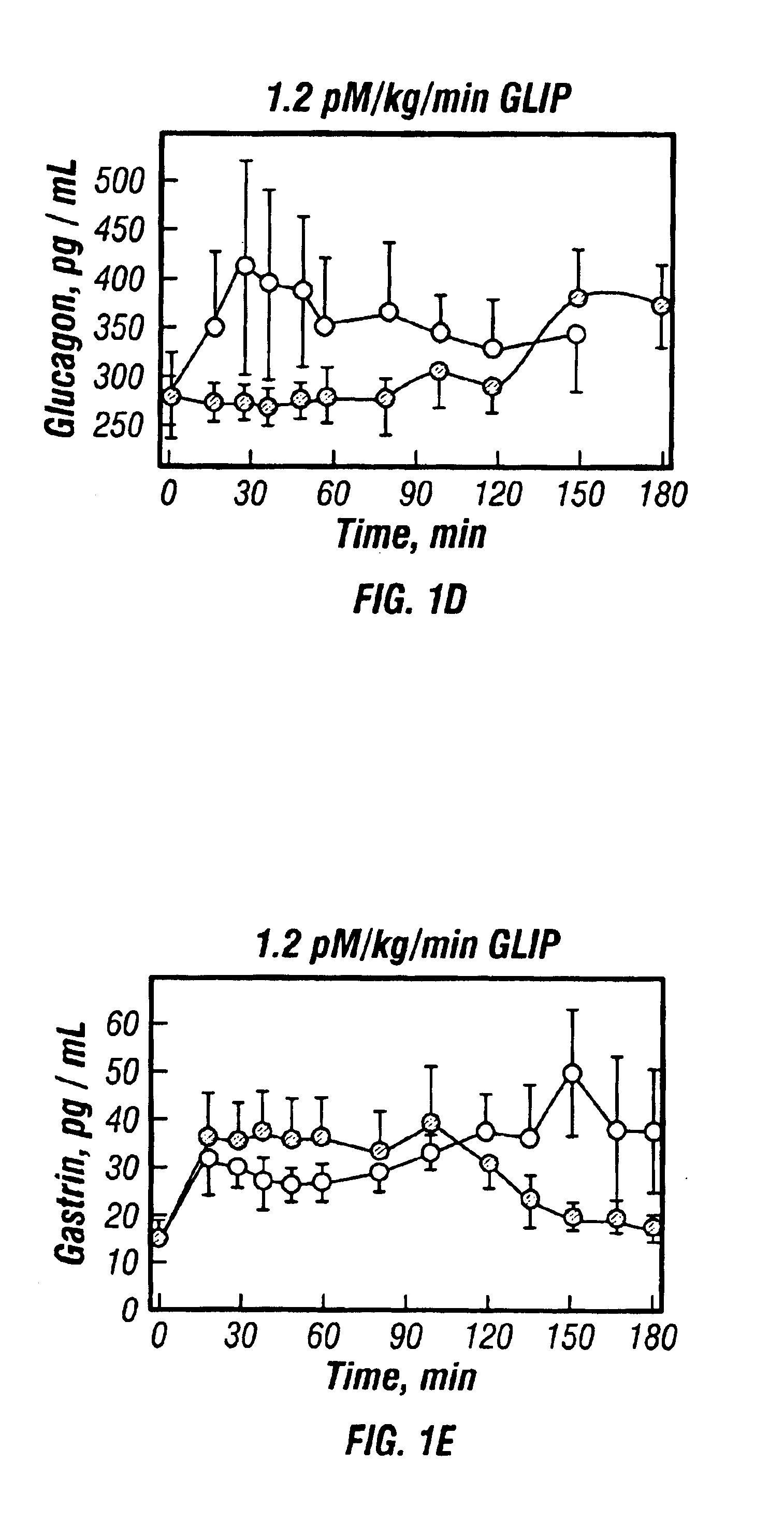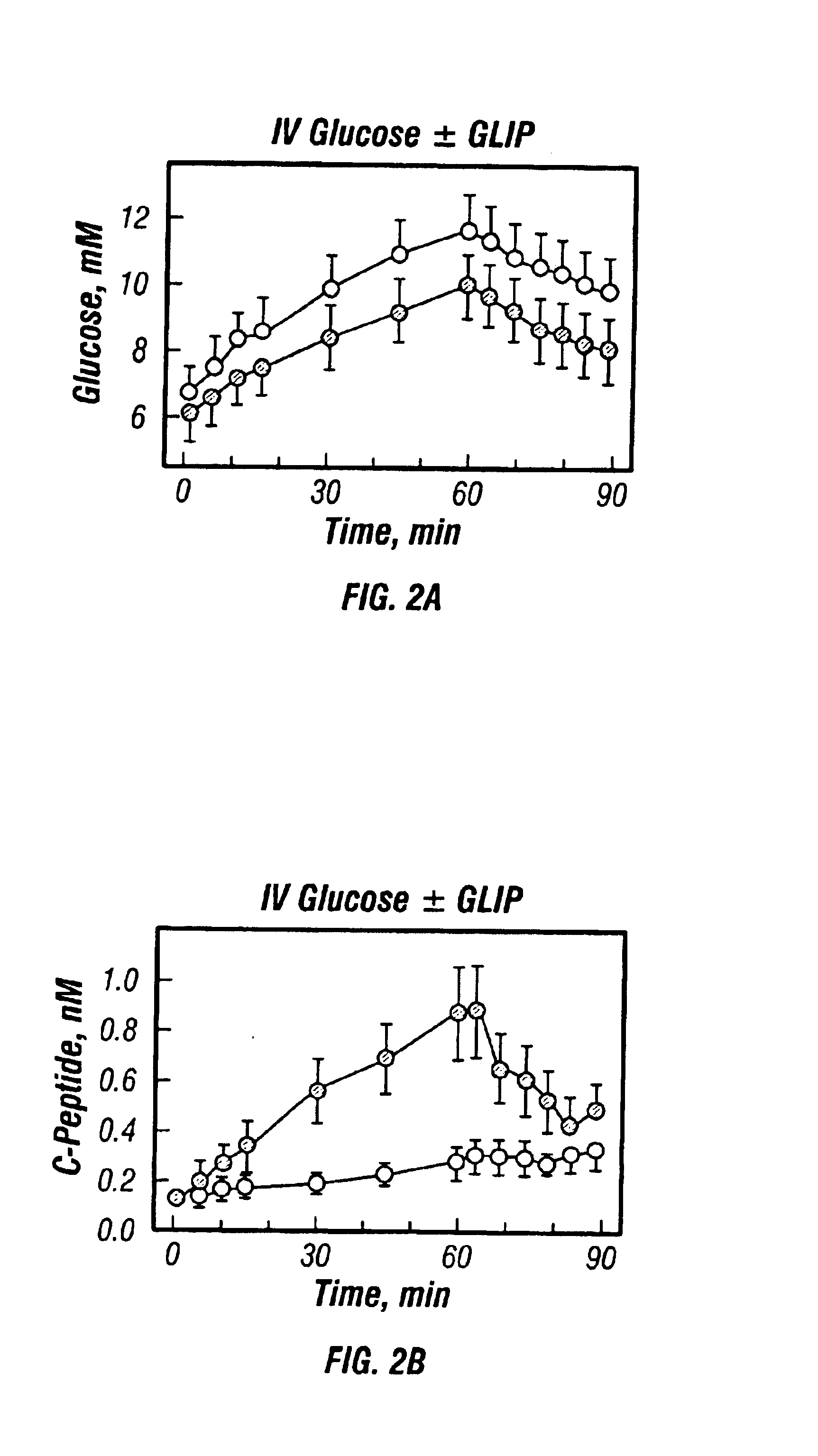Treatment of diabetes
a technology for diabetes and compositions, applied in the field of diabetes treatment, can solve the problems of limiting the degree of glycaemic control which can be safely attempted, accompanied by the risk of hypoglycaemia, and the inability to achieve true normalisation of blood glucose levels
- Summary
- Abstract
- Description
- Claims
- Application Information
AI Technical Summary
Benefits of technology
Problems solved by technology
Method used
Image
Examples
example 1
[0066]7 subjects with remission phase Type I diabetes were studied after ingestion of a standardised meal of Sustacal (Upjohn) (delivering 30 kg / kg). Subjects continued their normal insulin treatment programme on the day prior to the test and, on the day of the test, omitted their morning insulin injection and arrived fasting at 8:00 am. On one test day they were given the Sustacal meal, followed immediately by initiation of intravenous infusion of GLIP (synthetic human GLIP-(7-36)amide from Peninsula, U.K.) at an infusion rate of 1.2 pm / kg / min. Infusion was continued for 120 minutes. Blood levels of glucose, C-peptide, gastrin, glucagon and HPP were monitored by standard radioimmunoassay methods in samples taken before and at intervals during the study, up to 180 minutes. On another test day, subjects were given the Sustacal meal alone and the same analytes were similarly monitored.
[0067]Results are shown in FIG. 1.
example 2
[0068]Four subjects with remission phase Type I diabetes were studied during intravenous glucose infusion. Subjects prepared for the tests as described in Example 1, but received an intravenous infusion of glucose (20 g over 60 min. constant rate instead of the Sustacal meal. On one test day, they also received intravenous GLIP for 60 minutes (1.2 pm / kg / min for 60 min.) and on another test day, they received IV glucose alone. Blood levels of glucose and C-peptide were monitored as in Example 1.
[0069]The results are shown. in FIG. 2.
example 3
[0070]Four subjects with remission phase Type I diabetes were studied during infusion with 0.75 pm / kg / min-GLIP for 120 minutes after a Sustacal meal.
[0071]The test was conducted as described in Example 1 and blood glucose and C-peptide levels were measured. On a further test day, the subjects were studied during saline infusion after a similar Sustacal meal.
[0072]Results are shown in FIG. 3.
PUM
| Property | Measurement | Unit |
|---|---|---|
| time | aaaaa | aaaaa |
| size | aaaaa | aaaaa |
| adsorption | aaaaa | aaaaa |
Abstract
Description
Claims
Application Information
 Login to View More
Login to View More - R&D
- Intellectual Property
- Life Sciences
- Materials
- Tech Scout
- Unparalleled Data Quality
- Higher Quality Content
- 60% Fewer Hallucinations
Browse by: Latest US Patents, China's latest patents, Technical Efficacy Thesaurus, Application Domain, Technology Topic, Popular Technical Reports.
© 2025 PatSnap. All rights reserved.Legal|Privacy policy|Modern Slavery Act Transparency Statement|Sitemap|About US| Contact US: help@patsnap.com



